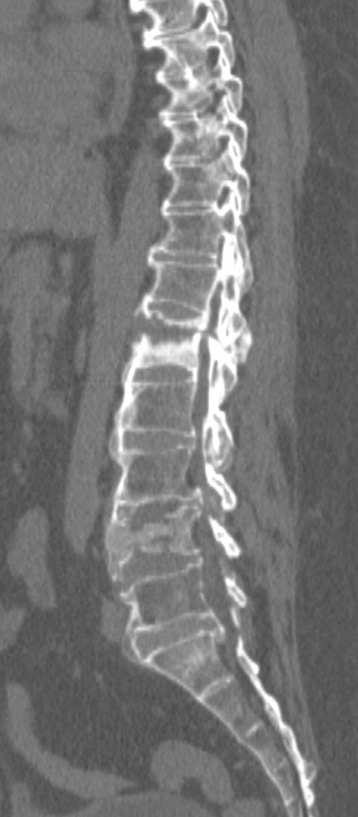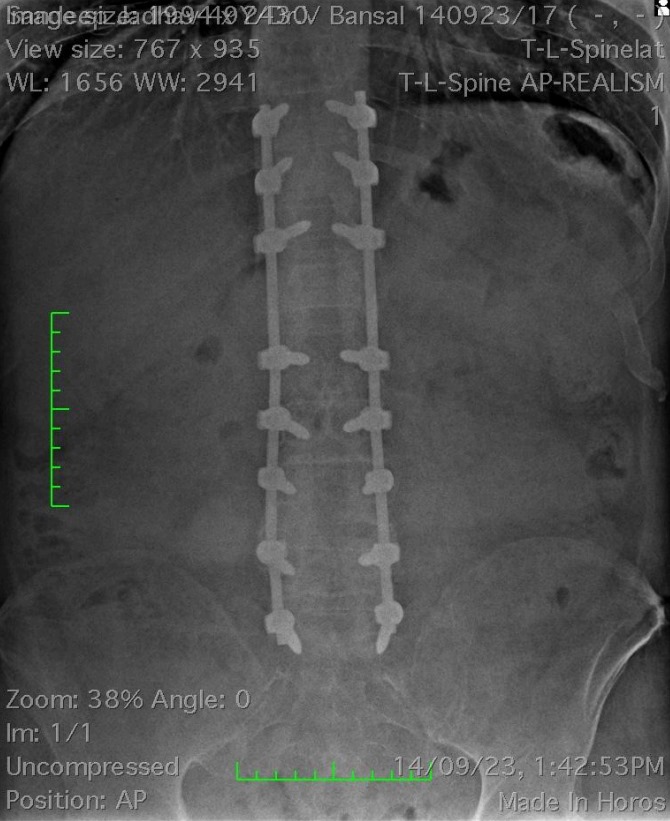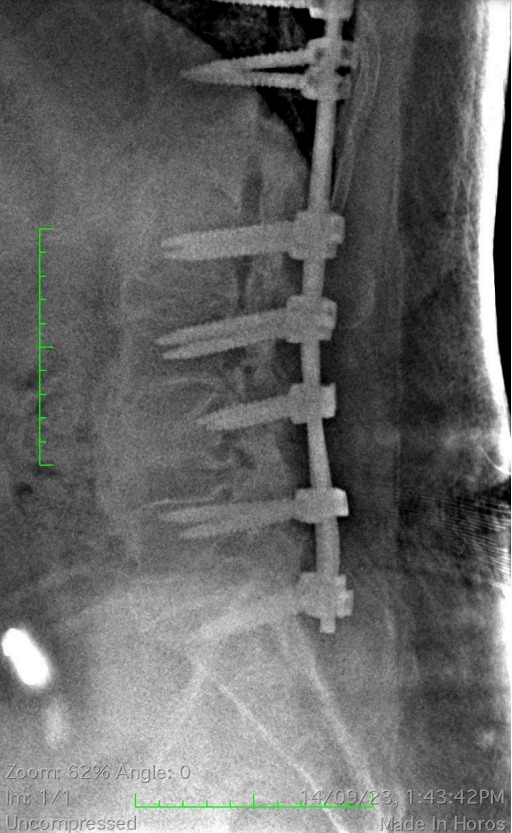Spine
Medical Laboratory And Specialists Services
Understanding Degenerative and Traumatic Spine Problems
The spine is a remarkable and complex structure that plays a vital role in supporting our bodies, protecting the spinal cord, and enabling us to move freely. However, various factors can lead to spine problems, which can be broadly categorized as degenerative and traumatic. Degenerative spine conditions arise from age-related wear and tear, while traumatic spine injuries result from accidents or sudden force. Both types of spine problems can cause significant pain, disability, and functional limitations, affecting an individual’s overall quality of life. Here, we will delve into the intricacies of degenerative and traumatic spine problems, explore their impact, and highlight the importance of seeking timely medical intervention and treatment.
Degenerative Spine Problems:
Degenerative spine problems primarily stem from the natural ageing process, where the structures of the spine undergo gradual changes and degeneration over time. Common degenerative spine conditions include:
- Degenerative Disc Disease: As we age, the spinal discs, which act as cushions between the vertebrae, lose their elasticity and hydration. This condition is known as degenerative disc disease, causing reduced disc height, spinal instability, and potential nerve compression.
- Spinal Osteoarthritis: Also called facet joint arthritis, this condition occurs when the cartilage that covers the facet joints in the spine wears down, leading to bone-on-bone contact and joint inflammation.
- Spinal Stenosis: Spinal stenosis is a narrowing of the spinal canal or neural foramina, resulting in the compression of spinal nerves. This can lead to discomfort,
pain, weakness, and numbness in the back and legs. - Spondylolisthesis: Spondylolisthesis occurs when a vertebra slips forward over the one below it, often causing nerve compression and instability in the spine.
Traumatic Spine Injuries:
Traumatic spine injuries result from sudden impact or force to the spine, often occurring due to motor vehicle accidents, falls, sports-related injuries, or physical assaults. These injuries can lead to severe damage to the spine, spinal cord, and surrounding structures. Common traumatic spine problems include:
- Spinal Fractures: A traumatic impact can cause fractures in the vertebrae, leading to instability and potential nerve damage.
- Spinal Cord Injuries: Severe trauma can cause damage to the spinal cord, resulting in partial or complete paralysis, depending on the level and extent of the injury.
- Disc Herniation: Trauma can cause the outer layer of a spinal disc to rupture, leading to disc herniation and nerve compression.

L1 and L4 Chance fracture in a patient with conus medullaris syndrome


Post operative X Ray showing Good screw placement with complete recovery of the patient
Surgery for Degenerative and Traumatic Spine Problems
When conservative treatments fail to provide sufficient relief or when degenerative and traumatic spine problems become severe, surgery may be recommended as a viable option.
A. Surgical Options for Degenerative Spine Problems:
- Spinal Fusion: Spinal fusion surgery is a common procedure used to treat various degenerative conditions, such as degenerative disc disease and spondylolisthesis. During the surgery, the surgeon fuses two or more vertebrae together using bone grafts, metal plates, or screws. The fusion stabilizes the affected segment of the spine, reducing pain and preventing abnormal motion.
- Artificial Disc Replacement: In cases of degenerative disc disease, where one or more discs are damaged and causing pain, artificial disc replacement offers an alternative to spinal fusion. During this procedure, the damaged disc is removed and replaced with an artificial disc designed to preserve motion and function similar to a natural disc.
- Foraminotomy: Foraminotomy is a surgical procedure that aims to relieve nerve compression caused by narrowed neural foramina. The surgeon enlarges the openings through which the spinal nerves exit the spinal canal, alleviating pressure and reducing nerve-related symptoms.
B. Surgical Options for Traumatic Spine Injuries:
- Spinal Decompression: For traumatic spine injuries, such as disc herniation or spinal cord compression, spinal decompression surgery may be performed. The goal is to relieve pressure on the spinal cord or nerves by removing the source of compression, such as a herniated disc or bone fragments.
- Spinal Fusion: In cases of severe spinal fractures or instability resulting from traumatic injuries, spinal fusion surgery may be necessary to stabilize the spine and promote healing. Metal screws, rods, and bone grafts are used to fuse the vertebrae together, restoring stability and preventing further damage.
- Vertebroplasty and Kyphoplasty: These minimally invasive procedures are used to treat painful vertebral compression fractures resulting from trauma. In vertebroplasty, bone cement is injected into the fractured vertebra to stabilize it and provide pain relief. Kyphoplasty involves the insertion of a balloon into the fractured vertebra to create space for the bone cement, restoring vertebral height and reducing deformity.
Benefits and Considerations:
Spine surgery can provide significant benefits for patients with degenerative and traumatic spine problems:
- Pain Relief: One of the primary goals of spine surgery is to alleviate pain caused by degenerative or traumatic conditions. By addressing the underlying issues that lead to nerve compression, instability, or tissue damage, surgery can offer substantial pain relief. This reduction in pain can allow patients to perform daily activities without hindrance and participate in activities they once avoided due to discomfort.
- Improved Functionality: Spine surgery aims to restore proper alignment and stability to the spine. By doing so, it can improve the overall functionality of the spine and its surrounding structures. Patients may experience enhanced mobility, better range of motion, and increased strength in the affected areas.
- Reduced Disability: Degenerative and traumatic spine problems can lead to disability and functional limitations, affecting a person’s ability to work, move, or engage in regular activities. Successful spine surgery can significantly reduce disability and help patients regain independence and control over their lives.
- Prevention of Further Damage: Untreated spine conditions can worsen over time and lead to additional complications. Surgery can halt the progression of the condition, preventing further damage and potential long-term consequences.
- Improved Spinal Stability: Surgical procedures such as spinal fusion stabilize the spine by fusing two or more vertebrae together. This stabilizes the affected segment, reducing abnormal motion, and preventing additional wear and tear.
- Enhanced Quality of Life: Chronic spine problems can negatively impact an individual’s emotional well-being and social interactions. By relieving pain, improving mobility, and increasing functionality, spine surgery can lead to an overall improvement in the patient’s quality of life.
- Faster Recovery with Minimally Invasive Techniques: Advancements in surgical techniques have led to minimally invasive spine surgeries. These procedures involve smaller incisions, reduced tissue damage, and faster recovery times compared to traditional open surgeries.
Why should you opt for it?
Degenerative and traumatic spine problems can significantly impact an individual’s daily life, causing pain, disability, and functional limitations. Timely diagnosis and appropriate treatment play a vital role in managing these spine conditions and improving quality of life. By seeking medical attention from experienced spine specialists and orthopaedic surgeons, individuals can explore personalized treatment options tailored to their unique needs, ultimately working towards regaining spine health and reclaiming an active and fulfilling life. Remember, early intervention is key to better outcomes and a brighter future for those affected by degenerative and traumatic spine problems.
Spine surgery represents a promising path towards relief and recovery for individuals with degenerative and traumatic spine problems. These surgical procedures aim to alleviate pain,
restore stability, and improve function, allowing patients to regain their mobility and resume their daily activities with newfound comfort. With advancements in surgical techniques and personalized treatment approaches, spine surgeons can offer tailored solutions to suit each patient’s unique needs, promoting optimal outcomes and enhancing the overall quality of life for those affected by degenerative and traumatic spine conditions.
Dr. Bansals Arogya Hospital is a leading healthcare institution known for its excellence in orthopaedic care and specialized spine treatments. With a team of highly skilled and experienced orthopaedic surgeons, the hospital is dedicated to providing compassionate and personalized care to patients with degenerative and traumatic spine problems. Here at Dr. Bansals Arogya Hospital, we have state-of-the-art facilities and the latest surgical technologies, ensuring that patients receive the highest standard of treatment. Committed to delivering successful outcomes, we combine expertise, innovation, and a patient-centric approach to ensure that individuals seeking relief and recovery find the best possible care for their spine conditions.
